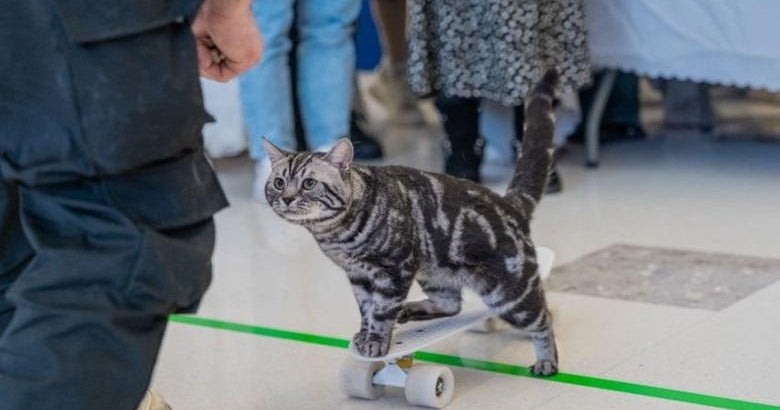Bussiness
Business plans to farm a seaweed that will limit methane emissions from cows

Methane is a greenhouse gas and, like carbon dioxide, its production has rocketed due to human activities. It comes from oil and gas drilling and from landfills.
“But actually, the largest source of methane on the planet is from the agriculture sector,” said Steve Meller, founder and CEO of CH4 Global.
And most of that comes from cows.
A cow is a ruminant, an animal with four chambers in its stomach. The first chamber is called the rumen, which has an enzyme that creates methane as a byproduct of the cows’ digestion. That’s when the methane is burped out by the animal and enters the atmosphere.
“But nature’s created the beautiful arrangement that this seaweed produces these quite powerful inhibitors that block that enzyme in cows,” Meller said.
The seaweed is called asparagopsis. Meller’s company is partnering with a marine biologist at San Diego’s Scripps Institution of Oceanography to find a cheap, efficient way to farm it and get it into the stomachs of the world’s beef and dairy cows.
Asparagopsis grows off the coast of San Diego, not to mention the waters off Australia and many other places. The primary active compound in asparagopsis is called bromoform.
Meller lives in the U.S. but has production facilities in New Zealand and his native Australia. He speaks in a broad Australian accent, pronouncing the word methane, MEE-thane.
Meller said stopping the creation of methane in a cow has no unhealthy side effects. In fact, he and others say preventing the emission of methane as a waste product means the cow retains more carbon and doesn’t need to eat as much to stay healthy.
Meller and his company grow the seaweed in land based operations that you might compare to fish farms. His San Diego consultant is professor Jen Smith at Scripps Oceanography.
Smith spoke to us in a basement lab where dozens of vials were filled with red asparagopsis samples that swirled in bubbling water. The samples came from Hawaii and Catalina Island. They are being grown in different temperatures of water.
Smith said the research poses a question.
“Can we find a supremely fast growing seaweed that also produces a whole lot of bromoform?” she said.
Smith is trying to optimize the production potential of the plant. The key is to find the best strain of asparagopsis for farming.
“My lab has the freedom and flexibility to do the research that can help inform the commercialization of the species, at scale.” she said.
Charlotte Radulovich
/
KPBS
Asparagopsis is not cattle feed. It’s an additive that Meller said is less than 1% of what the cow actually eats. Even so, CH4 Global and companies like it would have to be able to make a lot of it, at a low enough price, to supply the world’s cattle farms with a meaningful amount.
“Now it’s a matter of: Can we produce enough to have a global impact to see these methane reductions in our lifetime?” Smith said.
Steve Meller’s company has some competition. There are a lot of companies trying to sell the active ingredients in asparagopsis to the meat and dairy industry.
Smith said some companies are trying to synthesize bromoform and store it in other things a cow would eat. She said her research suggests active ingredients are most effective when they remain organic and are consumed while still in the seaweed.
Meller said he’s been producing asparagopsis in tanks, but he is making some changes he thinks will increase efficiency and bring down the cost. The company is building a large-scale facility in southern Australia where the seaweed will be grown in saltwater ponds.
“Imagine in front of you — there’s a large swimming pool, but the swimming pool is only a meter deep,” he said.
Methane may be a smaller global warming problem than CO2 because there’s a lot less of it. But it has 30 times more warming potential. Jen Smith says by feeding asparagopsis to cows we could really start to manage the world’s methane problem.









